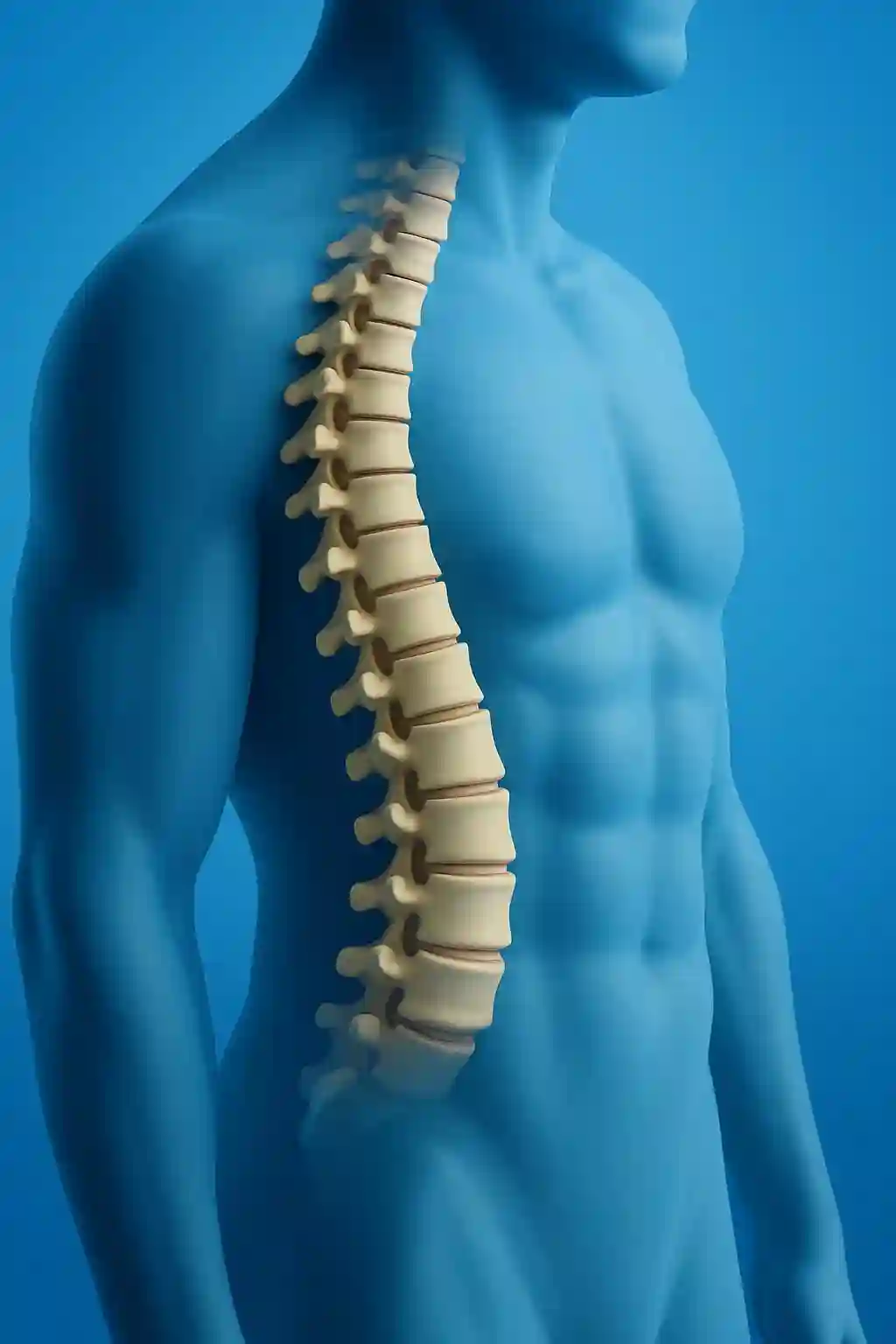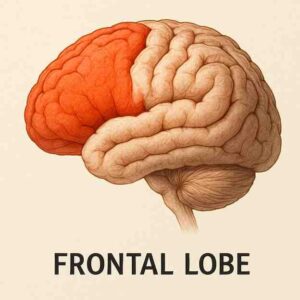In surgery, like in life, it’s usually one step at a time. But when fate slaps you with two equally urgent problems, it’s best to hit back with a one-two combo
Arundhati aunty walked in with the kind of careful gait that made me nervous before she even sat down. She was in her mid-sixties, with a neatly draped cotton sari and her hair in a braid slick with oil. She looked like the sort of person who would bring her own steel tiffin to the hospital canteen. Beside her was her son: mid-thirties, in a pressed pastel shirt and formal trousers, and carrying her handbag as if it were an infant. He had the slightly anxious look of a man who had Googled too much and slept too little.
“My legs don’t listen to me anymore,” she said. “My back hurts and the legs feel heavy and numb and tight and loose at the same time,” she said, acknowledging how confusing the description was. She needed to sit down after every few minutes of walking. “And my hands… they’ve become lazy.” Her son jumped in. “She drops spoons, can’t button her blouse, and keeps tripping when she walks. Two other doctors have seen her,” he added. “One said the problem lay in the neck, while the other said it was in the lower back,” she interrupted. “And both told me to rest. I don’t have the time to rest,” she made it clear.
I asked her to walk across the room. She moved as if she were in a train that had just started to pull away from the platform: hesitant, jerky, and occasionally reaching out to hold something. When I tested her grip, her hands slid off my fingers with ease. “This combo,” I said, “could be from the neck, the back, or both.” Her son frowned. “But the other doctors each picked only one.” “That’s the problem,” I said. “Sometimes it’s not one troublemaker. It’s a joint operation,” I announced. I was reminded of my daughters.
Lazy hands and untrustworthy legs are not a good combination. When the spinal cord is unhappy in the neck and the nerves are unhappy in the lower back, the body starts behaving like it’s running two separate protest marches. Her MRI scans confirmed the preliminary diagnosis: a tight cervical canal from an overgrown ligament and bony spurs pressing on the cord, and a severely narrowed lumbar canal from years of wear and tear. It wasn’t a question of either-or. It was both-and.
“When both the water tank and kitchen tap are blocked,” I told her, “You can’t fix just one and hope the tea will get made,” I gave her an analogy closer to home. She laughed, but her son looked alarmed. “You mean she needs two surgeries?” “Actually,” I said, “we can do it in one sitting. A surgical combo – like a thali, where you get two courses simultaneously.” I explained that there was the option of doing the neck first and evaluating the extent to which she would improve, but I preferred to give her the best shot the first time around. They agreed with my reasoning.
On the day of surgery, with her positioned prone, we started with the neck. Through a gentle midline incision at the back, we exposed the compressed cervical spinal cord. The overgrown ligament came off like a stubborn plastic seal on a pickle jar. We freed the cord, watched it resume its natural contour, and closed the wound. Then we proceeded to the lumbar spine. Here, the thickened ligaments and bony overgrowth came away in layers. The nerves, previously squashed flat, now had space to breathe. By the time we were done, her spinal cord and lumbar nerves were both free, like clearing two traffic jams before the morning rush hour. As Dr. Harvey Cushing, the famous neurosurgeon, once said, “A surgeon is a man who has to be prepared to get up in the night and do something about the mess in someone else’s life.” That morning, we cleared two messes in one go.
Operating on two different regions of the spine in one session isn’t for every patient. It depends on one’s general health, endurance under anaesthesia, and whether both problems are equally urgent. In her case, the choice was simple: fix both simultaneously, and save her the ordeal of two hospital stays, two anaesthetics, and two recoveries.
The next morning, she flexed her fingers and reached for her cup of tea without spilling a drop. “You’ve oiled my hinges!” she said. “Just freed up the wiring,” I replied. Her son was smiling for the first time since I’d met him. “She walked to the washroom on her own this morning!” he said, almost as if reporting a small miracle. By day two, her walking was smoother – not perfect, but without that stop-start shuffle that had brought her here.
Just before getting discharged, she asked, “So I’m fully serviced now?” “Yes,” I said. “Neck alignment, lumbar clearance… full warranty for one year!” She chuckled. “And after that?”
“That’s when you opt for an AMC, an annual medical checkup.” But for her, I told her I’d make an exception and see her every three months.
Spinal compression is not always one problem in one place. Symptoms in the hands and legs can have overlapping causes. If you treat only the obvious one, you may leave the other to continue its quiet sabotage. The art lies in listening to the patient, examining them carefully, and matching the story to the scans. Of course, consulting a neurological surgeon alongside also helps.
Cervical compression often causes hand clumsiness, loss of fine motor skills, and a stiff, awkward gait. Lumbar compression tends to cause pain, numbness, or weakness in the legs, especially when walking. When both are present, it’s called tandem stenosis – a polite term for the body having two roadblocks at once.
In such cases, sometimes the best way forward is… both ways forward. As I watched her walk out of the ward that day, sari pleats swaying and steps more confident, I thought about how rare it is to fix two big problems in one go. In life, as in surgery, the combo platter doesn’t always work, but when it does, everyone leaves the table satisfied.The Surgical Combo





25 thoughts on “The Surgical Combo”
A story well told .. love all your analogies !
Dr you describe every patient’s appearance with such detail…we can almost picture them…Lovely!
Happy endings I love!
Such a brilliant n satisfying read – specially the ‘Thali’ so well laid out.
Lovely way to begin Sunday mood.
Thank you Doc
You make surgeries sound easy…it’s like a reassurance that the patient is in safe hands. Thanks for sharing 😊
Dear Mazda,
As always, I found myself holding my breath and looking over your shoulder at the surgery table!!
What a story-teller!
The irony is that the main protagonist in the tale is an even more talented surgeon than the narrator!
Who said great surgeons cannot be amazing wordsmiths?!
Great 👍
Excellent job 👏👏
Super read,,, so well written!
A combo of a great surgeon n a great writer!! Congratulations on the success!
A very difficult surgery ade to look so easy by your talented pen. Mazda only a genius can do this and u truly are one.
Thank you, Sir for the insight in to the problem
How simple u sounded with such a complex procedure.. amazing play of words.. soothing for a patient.. I am a case of lumbar stenosis.. manageable currently…
When life throws us two roadblocks at once, most of us stall.
But you clear them both. In surgery, and in storytelling 🙃
God bless you and your family. Best wishes for a long healthy peaceful life to spread healing and alleviate suffering and receiving blessings from unfortunate patients. Firoza and Zinoo Master
Superb!
Like always very well articulated with a touch of humour
The thali that you serve us every Sunday is something we all look forward to -a standard procedure or two as in this one, some spicy tension, some tangy twists, a generous sprinkling of humour and a sweet success story- all arranged so aesthetically for our consumption, always leaving us satiated and yet wanting more.
On a lighter note… get ur old wirings repaired @Mazda Service Centre!
Really Great Sir
Big salute Dr Mazda..u r a REALLY BOLD Neurosurgeon to go and operate in 2 areas at once..love all your similes and metaphors and descriptions..A+ in creative writing and of course Neurosurgery too
Dear Dr. Mazda,
I just wanted to express my deepest admiration for your exceptional skill and dedication. The complex dual surgery you performed on the neck and lower back is truly remarkable. Your precision, expertise, and commitment to delivering outstanding patient care are an inspiration.
Thank you for your tireless efforts and for making a significant difference in people’s lives. You’re an asset to the medical community!
With best wishes
Everything is described so vividly that the story just unfolds in front of one’s eyes…like a movie on the screen. Lovely narrative. Keep up the good work
Superb Dr. 👌👌
Dear doctor,ur skill and diagnosis is incomparable.In my knowledge i do not know any such a doctor. These qualities plus ur dedication makes us admire u every time we read about ur cases of treatment. God bless you.
I was diagnosed with Parkinson’s disease four years ago. For over two years, I relied on Levodopa and several other medications, but unfortunately, the symptoms kept getting worse. The tremors became more noticeable, and my balance and mobility started to decline quickly. Last year, out of desperation and hope, I decided to try an herbal treatment program from NaturePath Herbal Clinic. Honestly, I was skeptical at first, but within a few months of starting the treatment, I began to notice real changes. My movements became smoother, the tremors subsided, and I felt steadier on my feet. Incredibly, I also regained much of my energy and confidence. It’s been a life-changing experience I feel more like myself again, better than I’ve felt in years.If you or a loved one is struggling with Parkinson’s disease, I truly recommend looking into their natural approach. You can visit their website at http://www.naturepathherbalclinic.com
For every ailment or disease, there exist natural herbs capable of providing complete recovery without any adverse effects. I have personally had numerous positive experiences with the herbal medicine I procured from Dr. Spiritual, which successfully eradicated my issue with the herpes virus. I am particularly impressed with the efficacy of these herbal products and would highly recommend them to anyone seeking a remedy for the herpes virus or other health conditions. here are his contact information, WhatsApp:+2347055029151
email: swordofspirit096@gmail.com .
Brilliant